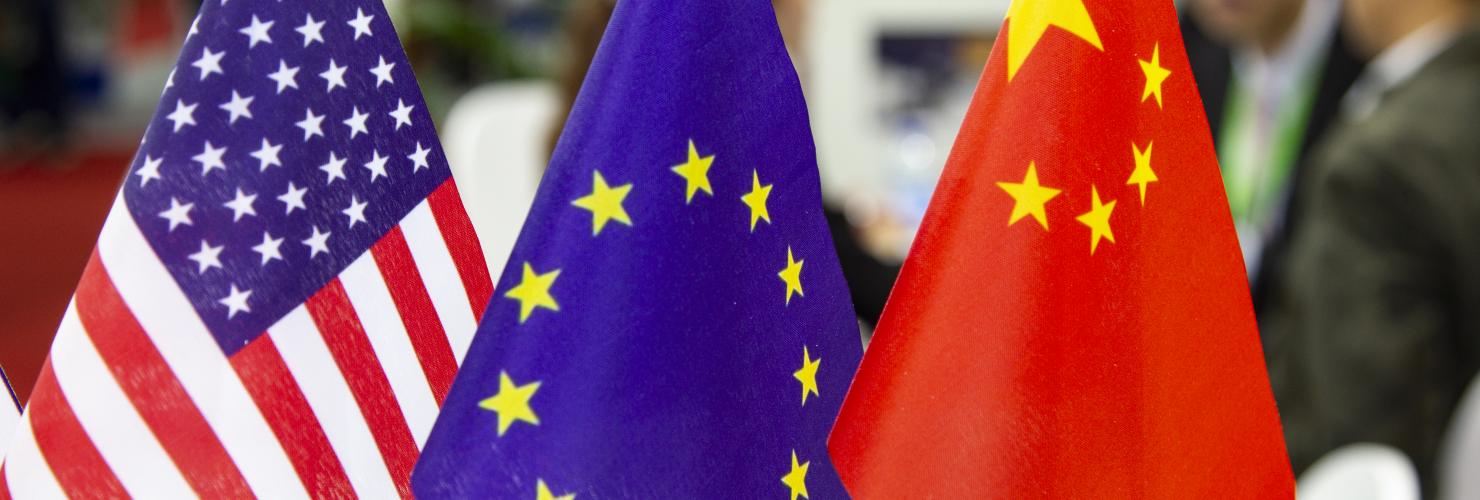

What shall we do with China?
The geopolitical rivalry between the United States and China will be the most defining, and permanent, question in international relations for decades to come. And Europe needs to decide how to position itself.
Although some believe the situation will improve once Donald Trump and Xi Jinping reach an agreement, or once we have a new American president in the White House next year, the reality is that the most likely scenario is that the geopolitical rivalry (and tension) between the United States and China will be the most defining, and permanent, question in international relations for decades to come. Hence, there is no point in burying the head in the sand and hoping for the storm to pass. We must think strategically and in the long term.
Option 1: Join forces with the United States
The European Union, including Spain as a key member of the richest club in the world, has four options. The first one is to stop messing around and join forces with our American cousins. True, the Americans have a very different mentality to us. They have the death penalty, love firearms, hate social democracy and wash their chicken in chlorine, but there are so many factors that bring us together. We both believe in liberal democracy, with its rights and liberties for the individual, and we should not be naïve: thanks to the NATO alliance, the United States remains our military guarantor.
Option 2: Align with China
The second option is to look to the future and leave the past behind and understand that China will be the great superpower of the 21st century. It is just a question of scale, dynamism and inertia. The same way British leaders begrudgingly conceded in the 19th century that the US was unstoppable and the smart thing to do was to jump on the wave and not resist it to maintain the prosperity of the society, the same needs to do now the EU with the rise of China.
The Chinese economy is already today bigger than the US economy in 2005 (in the midst of the real estate and financial bubble), and according to the projections of Goldman Sachs, it will be almost double the size of the American economy by mid-century. Europe, with aging and less dynamic societies, simply cannot afford to miss out on such a big market.
Option 3: Become divided
The third option is to divide us and become ever more peripheral and insignificant. Many people think that we are already here. Countries like the UK have decided that they will side with the US, and other countries in the East (Hungary) and the South (Greece and Portugal) are already under the Chinese orbit. Of course, reality is a bit more complex. Within every European society there are groups that remain strongly transatlantic and others that have started to look to the Far East to increase their business. Italy is a good example. While Di Maio, from the Five Star Movement, was keen on signing the Memorandum of Understanding in order to join China’s Belt and Road Initiative, Salvini, from La Lega, was adamant to stick to the military umbrella provided by the US. But the point remains. Divisions are widespread, and this makes us weaker.
Option 4: European Strategic Autonomy
The fourth option is to develop the so-called European strategic autonomy. In concrete terms, this would mean that the EU would build its own technological (including a European Google) and military (yes, a European army) capacities in order to be fully independent in all areas. Many believe this is impossible (the differences and divisions are just too big) so the default strategy should be option 1. The question is whether option 1 does not push us irremediably toward option 3. It is not just that the weaker countries of the East and the South of the EU club look increasingly to Beijing, a lot of the stronger, exporter countries of the north, including Germany, will continue to want to export to China. Even Switzerland, proudly independent and neutral, has a free trade agreement with Beijing. The Chinese market is just too attractive.
Where to go from here?
From a Spanish perspective, given its strong Europeanism, the strategy should be as follows: we need to try to avoid option 3 like the pest, and to do that we need to work with France and Germany (while including the smaller countries) in building option 4. At the same time, we cannot close the door of option 1. The United States remains our most important ally. Nevertheless, we need to be smart and keep option 2 alive. Obviously, this needs to be done through critical engagement. If China wants to enter the European market, its needs to open its market to European goods and services.
What about the Chinese socio-political system? Is that not a threat? As long as the European system delivers (and unfortunately this is now in doubt), the Chinese system will never be attractive. However, to achieve this we need to improve our model, and this brings us unavoidably back to embrace option number 4.
The article has originally been published in Spanish by El Confidencial on August 17, 2019.

